Colombia Day ! Probably the most specific and famous ships of the Colombian Navy in the Cold War: Ordered in 1954 these modified Swedish Halland class destroyers mounted a different armament, more electronics, different interior arrangement, and were built on purpose at Gotawerken and cockums from 1955 to 1958. ARC 7 de Agosto (D-06) was originally laid down in November 1955 as 13 de Junio, at Götaverken, Gothenburg differing by a third 120 mm turret in place of a 57 mm AA turret. “13 August” was completed on 31 October 1958 and a career of almost 30 years, scrapped in 1984. Her sister D05 VEINTE DE JULIO was launched in June 1956 and commissioned in June 1958, she was discarded much later in 1985. Both were refitted in the US in 1975-76, included a machinery overhaul, 25 kts top speed, new Dutch electronics, M4 radar director.
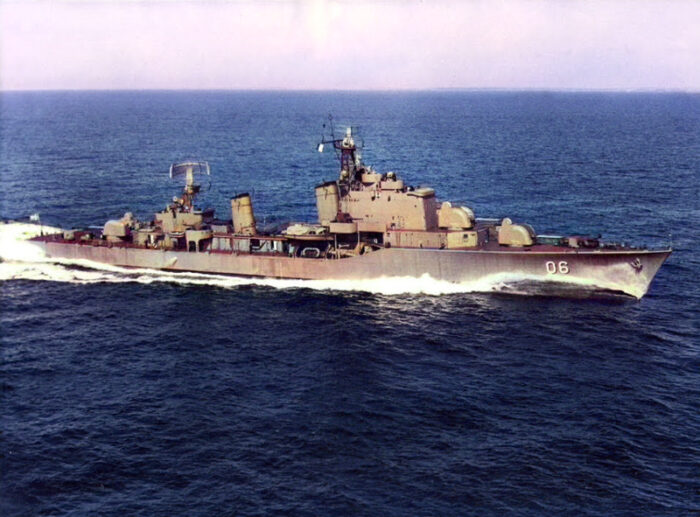
Design of the class
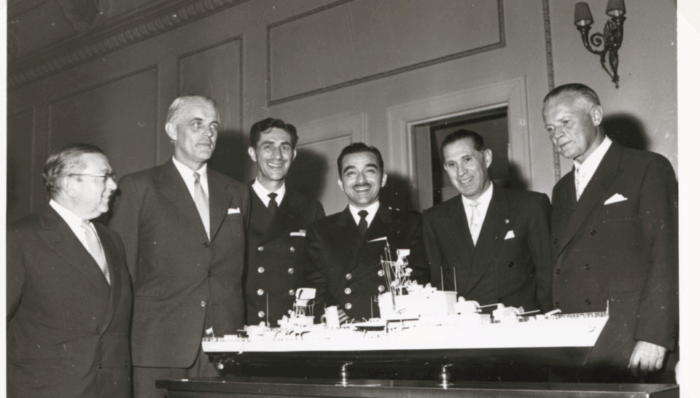
The deal between the Colombian Navy and Swedish Government in 1954.
The Halland-class were two destroyers built for the Swedish Navy in the 1950s, in the continuation of a modernization to replace 1930s generation destroyers. Initially, four ships were planned. However, the second pair, Lappland and Värmland, was cancelled but budgetary reasons, and instead, they were sold to the Colombian Navy, after modifications asked by the latter. This became the 7 de Agosto class, and they had many more years of service compared to the Swedish Halland class.
The Halland class were preceded by the öland class, and improved on many points. They ended as well-rounded general purpose surface combatants, first in Europe with antiship missiles. Next were the Östergötland-class destroyer. The Colombian variants were modernized but remained with their original anti-surface focused armament until decommissioned in 1986, the Swedish ships being retired in 1982.
Hull and general design
Being identical to the original Halland class expect swapping a turret, the 7 de Agosto class displaced 2,650 tons standard and 3,300 tons full load, for an overall length of 121 m (397 ft), a beam of 12.4 m (40 ft 8 in) and a draft of 4.7 m (15 ft 5 in). The design was still very much a ww2 style, with a forecastle and aft lower deck, artillery fore and aft, rocket launchers, torpedo tubes and AA guns, making for a well-rounded armament. With them, the Colombian Navy had large surface combatants, almost as valuable as cruisers. The sticking point of the Halland class compared to their contemporaries were their very large bridge, notably compared to relatively thin funnels amidships, giving them an unusual appearance. The tall bridge was made in light metals to alleviate stability problems, but the design had very little room for additions with a metacentric height that was already topping its limits. They came out with a crew of 248, the largest in the Cold War Colombian Navy.
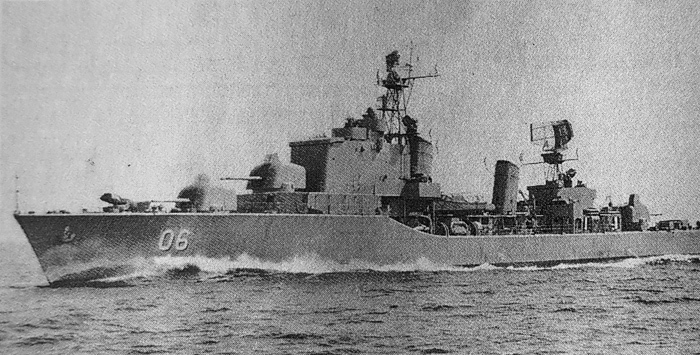
ARC 7 de agosto as completed
Power plant
The propulsion consisted in two 3-bladed bronze propellers mated to two shaft De Laval double geared turbines, fed by two Penhoët boilers for a total rating of 55,000 hp (41,000 kW). Top speed was 32 knots (59 km/h). They carried 524 tonnes of oil making for a range of 3,000 nmi (6,000 km) at 19-20 knots (37 km/h), down to 445 nmi (824 km) at 35 knots (65 km/h) absolute top speed for a short run.
Armament
Bofors 120mm/50 M/50
The main difference with the Halland class was the replacement of a twin 57 mm Bofors AA on “Y” position by a third 120 mm turret. The turret was dual purpose to some extent, but mostly seen as anti-ship capable, however they shared a single cradle mount, and thus, dispersion was an issue, alleviated by the usual firing delay between the two guns. It seems their side-mounted flare rockets were dismounted on photos.
⚙ specifications Bofors 12 cm/50 M50
Full turret and mount weight 67,000 kg (148,000 lb).
Barrel length L/50 including breach, for 120 millimetres (4.7 in) cal.
Shell: 120 × 835 mm R 23.35 – 23.5 kg
Action: Automatic extraction with integrated autoloader
Elevation/traverse: -9°/+85° at 25°/s and 360° at 22°/s
Rate of fire: 2 × 42 rounds/min
Muzzle velocity: 835–850 m/s (2,740–2,790 ft/s)
Torped 613 (TP613)
The 7 de Agosto class had a single torpedo tube bank aft of the second funnel as a compensation for the replacement of the 57 mm for a 120 mm. The space was used for the Bofors 40 mm notably.
Torped 61 Specs:
1,8t, 7 m long, 533 mm calibre, Warhead 300 kg HE with proximity fuse.
Powered by Alcohol and HTP (piston engine) at 50kts over 20 km, wire guided with controlled homing.
Bofors 40mm M/48
Unlike the completely covered twin M/48 as for the öland and Halland class which had three, the 7 de Agosto had simpler and lighter single mounts under shields.
The Bofors M/48 fired an AB 40 mm L/60 HE-T weighting 2.05 lbs. (0.93 kg) full, complete round 17.60 in (44.7 cm) and about 0.661 lbs. (0.300 kg) propellant for the HE 4.63 lbs. (2.1 kg) which carried 0.150 lbs. (0.068 kg) TNT for the HE-T 7a.
Muzzle velocity was 2,789 fps (850 mps), with a barrel life between 9,600 and 10,000 Rounds. Bofors produced 11 Naval guns for the Swedish Royal Navy, 61 for export prewar and in wartime 320+ guns for the Swedish Royal Navy alone, 38 postwar, production ended in 1954. Some of the twin water-cooled mounting had integral 1.25 m or 2.0 m Hazemeyer rangefinders.
Bofors 375 mm M50 ASWRL
The 7 de Agosto class destroyer had two Bofors 375 mm anti-submarine rocket installed on the foredeck, forward of “A” turret.
Specs:
375 mm (14.8 in) calibre, Solid fuel rocket.
Maximum firing range 3,625 m (11,893 ft)
Warhead: High explosive, with Acoustic Proximity Fuse
It is not clear if they also had depth charge racks and launchers as for the Halland class.
Sensors
LW-03/SGR-114 radar: The LW-03 (LuchtWaarschuwingsradar) is a Dutch long-range air surveillance radar operating in the L band, a modernized version of the LW-02 with improved anti-jamming characteristics and same antenna. It was developed in the late 1950s. Range was 120 NM (220 km).
DA-02/SGR-105 radar: Dutch model, improved DA01 (Doels Aanwijzing, “target indication”) working in S-band.
Six M45 radars: These were related to fire control for the main 120 mm guns and 40 mm Bofors.
Sonar: Swedish sonar (unknown type) housed in a retractable dome under the bow.

⚙ specifications |
|
| Displacement | 2650t standard: 3300t full load |
| Dimensions | 397ft 2in pp x 40ft 7in x 15ft 4in max 121.1 m x 12.4 m x 4.7m |
| Propulsion | 2-shaft De Laval double red. g. turbines, 2 Penhoët boilers 55,000shp. |
| Speed | 32 kts |
| Range | 3000 nm at 20 kts or Range 450nm 18 kts speed |
| Armament | 3×2 Bofors 120mm, 4×1 40mm Bofors AA, 1×4 533mm TT, 375mm Bofors ASWRL |
| Sensors | Radar LW-03, DA-02. |
| Crew | 248 |
Career of the 7 de Agosto class
 ARC 20 de Julio (D-05)
ARC 20 de Julio (D-05)

20 de Julio (D-05) or Veinte de Julio (“20 july”, Colombian Independence Day) was built at Eriksbergs Mekaniska Verkstad in Gothenburg, launched on 26 June 1952 and commissioned by the Colombian Navy on 15 June 1956. During her 26 years of operational life she did not take part in any major actions, except for periodic exercises with US Navy (UNITAS). She was decommissioned in 1986 and later scrapped after a career that spanned almost 30 years.
The date of 20 July marked the start of the revolution initiated by the criollos in the capital of the Viceroyalty of New Granada against the Spanish Empire.
 ARC 7 de Agosto (D-06)
ARC 7 de Agosto (D-06)

7 de Agosto (D-06) (ex-Trece de Junio) (D 06), built by Götaverken, Gothenburg. She was laid down in November 1955 as Trece de Junio and renamed when launched on 26 June 1956, commissioned on 31 October 1958. During her 26 years of operational life, she never participated in any major actions, except for periodic exercises with US Navy ships. She was decommissioned in 1986 and later scrapped. For anti-submarine warfare, there was a hydrophone housed in a radome under the fore-body, which could be retracted into the hull when the hydrophone was not in use.
A French sources states their stern was modified to launch the Saab Robot 08, but it’s not confirmed in any other.
The prefix “ARC” stands for Armada de la “República de Colombia”.
The date of 7 august corresponds to a holiday commemorating the day in 1819 when the Battle of Boyacá was fought, the Spanish Army gave up its weapons and the Freedom Army led by Simón Bolívar was victorious.

ARC 7 de Agosto, From Pinterest
Read More/Src
Books
Borgenstam, Curt; Insulander, Per; Kaudern, Gösta (1989). Jagare: med Svenska flottans jagare under 80 år (in Swedish). Västra Frölunda: Marinlitteratur.
Gardiner, Robert; Chumbley, Stephen (1995). Conway’s All The World’s Fighting Ships 1947–1995. NIP
Hofsten, Gustaf von; Waernberg, Jan; Ohlsson, Curt S. (2003). Örlogsfartyg: svenska maskindrivna fartyg under tretungad flagg.
Stockholm: Svenskt militärhistoriskt bibl. i samarbete med Marinlitteratur.
Curt Borgenstam, Per Insulander et Gösta K audern, Jagare: med Svenska flottans jagare under 80 år, Västra Frölunda, Marinlitteratur, 1989
Robert Gardiner et Stephen Chumbley, Conway’s All The World’s Fighting Ships 1947–1995, Annapolis, Maryland, USA, Naval Institute Press, 1995
Gustaf von Hofsten, Jan Waernberg et Curt S. Ohlsson, Örlogsfartyg: svenska maskindrivna fartyg under tretungad flagg, Stockholm, Svenskt militärhistoriskt bibl. i samarbete med Marinlitteratur, coll. « Forum navales skriftserie, 1650-1837. 2003
Links
cyber-corredera.de 185
armada.mil.co ceremonia-de-bautizo
cyber-corredera.de/ 253.pdf
reportedebatalla.wordpress.com 20-de-julio
web.archive.org navypedia.org/ 7 de agosto
facebook.com ArmadaDeColombia 7 de agosto
facebook.com destructor 7-de-agosto replica
en.wikipedia.org ARC_20 de Julio (D-05)

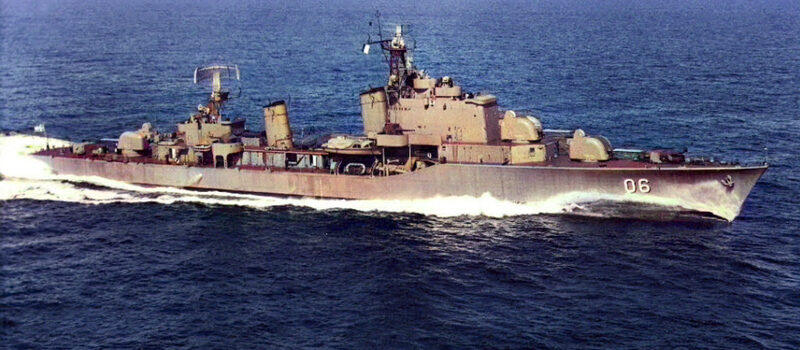
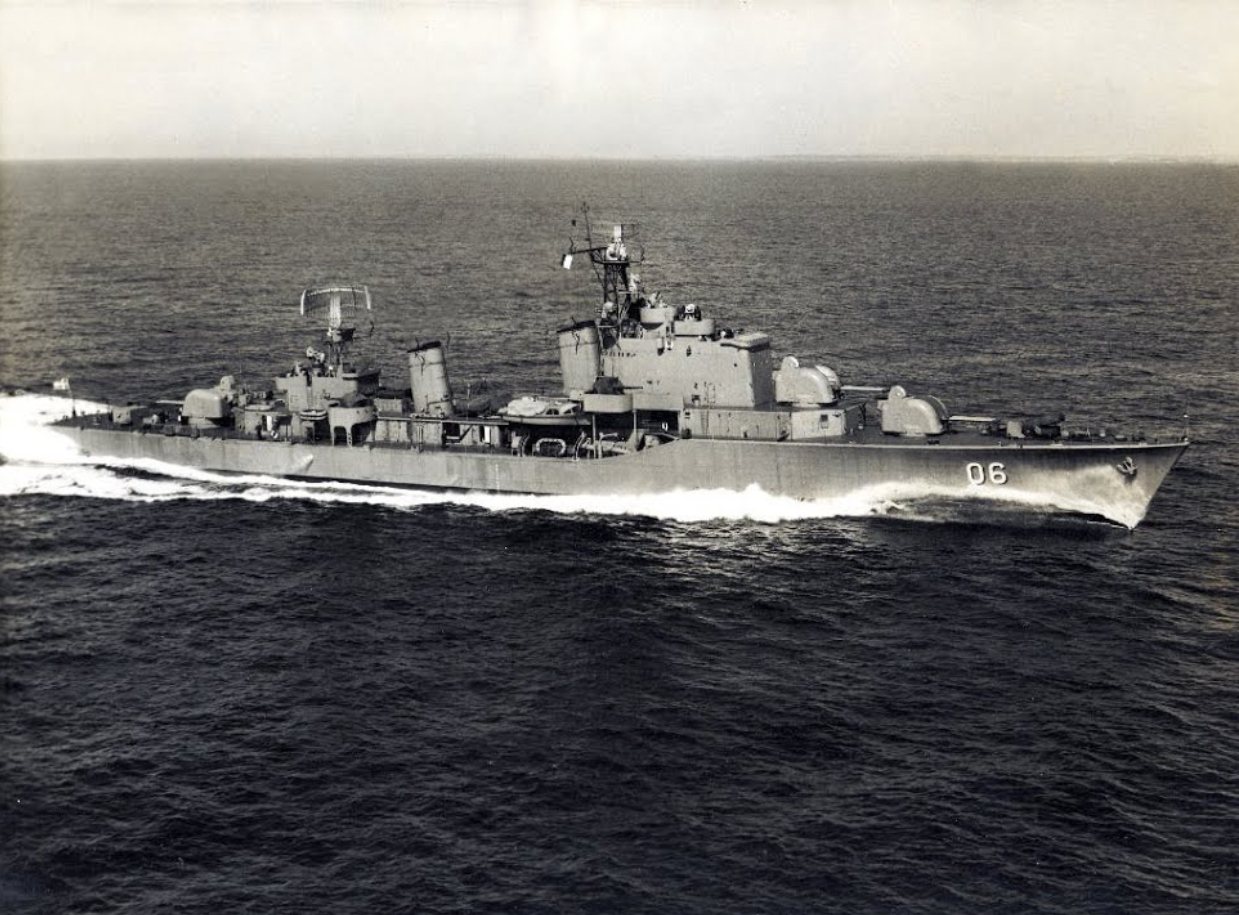
 Latest Facebook Entry -
Latest Facebook Entry -  X(Tweeter) Naval Encyclopedia's deck archive
X(Tweeter) Naval Encyclopedia's deck archive Instagram (@navalencyc)
Instagram (@navalencyc)





 French Navy
French Navy Royal Navy
Royal Navy Russian Navy
Russian Navy Armada Espanola
Armada Espanola Austrian Navy
Austrian Navy K.u.K. Kriegsmarine
K.u.K. Kriegsmarine Dansk Marine
Dansk Marine Nautiko Hellenon
Nautiko Hellenon Koninklije Marine 1870
Koninklije Marine 1870 Marinha do Brasil
Marinha do Brasil Osmanlı Donanması
Osmanlı Donanması Marina Do Peru
Marina Do Peru Marinha do Portugal
Marinha do Portugal Regia Marina 1870
Regia Marina 1870 Nihhon Kaigun 1870
Nihhon Kaigun 1870 Preußische Marine 1870
Preußische Marine 1870 Russkiy Flot 1870
Russkiy Flot 1870 Svenska marinen
Svenska marinen Søværnet
Søværnet Union Navy
Union Navy Confederate Navy
Confederate Navy Armada de Argentina
Armada de Argentina Imperial Chinese Navy
Imperial Chinese Navy Marinha do Portugal
Marinha do Portugal Mexico
Mexico Kaiserliche Marine
Kaiserliche Marine 1898 US Navy
1898 US Navy Sovietskiy Flot
Sovietskiy Flot Royal Canadian Navy
Royal Canadian Navy Royal Australian Navy
Royal Australian Navy RNZN Fleet
RNZN Fleet Chinese Navy 1937
Chinese Navy 1937 Kriegsmarine
Kriegsmarine Chilean Navy
Chilean Navy Danish Navy
Danish Navy Finnish Navy
Finnish Navy Hellenic Navy
Hellenic Navy Polish Navy
Polish Navy Romanian Navy
Romanian Navy Turkish Navy
Turkish Navy Royal Yugoslav Navy
Royal Yugoslav Navy Royal Thai Navy
Royal Thai Navy Minor Navies
Minor Navies Albania
Albania Austria
Austria Belgium
Belgium Columbia
Columbia Costa Rica
Costa Rica Cuba
Cuba Czechoslovakia
Czechoslovakia Dominican Republic
Dominican Republic Haiti
Haiti Hungary
Hungary Honduras
Honduras Estonia
Estonia Iceland
Iceland Eire
Eire Equador
Equador Iran
Iran Iraq
Iraq Latvia
Latvia Liberia
Liberia Lithuania
Lithuania Mandchukuo
Mandchukuo Morocco
Morocco Nicaragua
Nicaragua Persia
Persia San Salvador
San Salvador Sarawak
Sarawak Uruguay
Uruguay Venezuela
Venezuela Zanzibar
Zanzibar Warsaw Pact Navies
Warsaw Pact Navies Bulgaria
Bulgaria Hungary
Hungary

 Bundesmarine
Bundesmarine Dutch Navy
Dutch Navy Hellenic Navy
Hellenic Navy Marina Militare
Marina Militare Yugoslav Navy
Yugoslav Navy Chinese Navy
Chinese Navy Indian Navy
Indian Navy Indonesian Navy
Indonesian Navy JMSDF
JMSDF North Korean Navy
North Korean Navy Pakistani Navy
Pakistani Navy Philippines Navy
Philippines Navy ROKN
ROKN Rep. of Singapore Navy
Rep. of Singapore Navy Taiwanese Navy
Taiwanese Navy IDF Navy
IDF Navy Saudi Navy
Saudi Navy Royal New Zealand Navy
Royal New Zealand Navy Egyptian Navy
Egyptian Navy South African Navy
South African Navy






























 Ukrainian Navy
Ukrainian Navy dbodesign
dbodesign